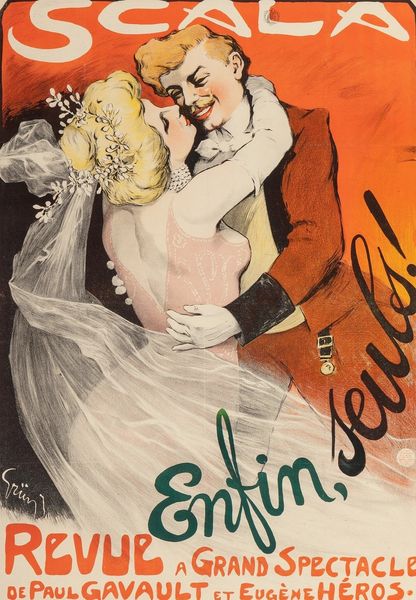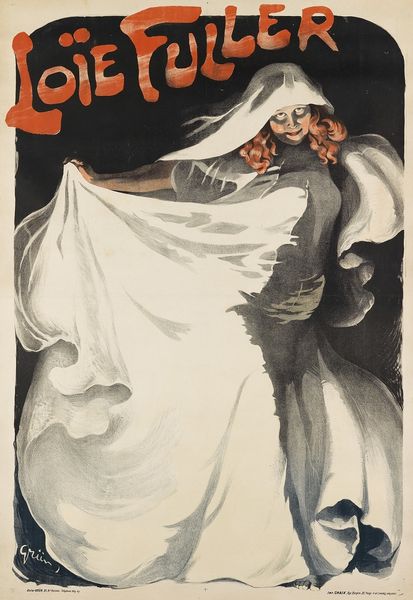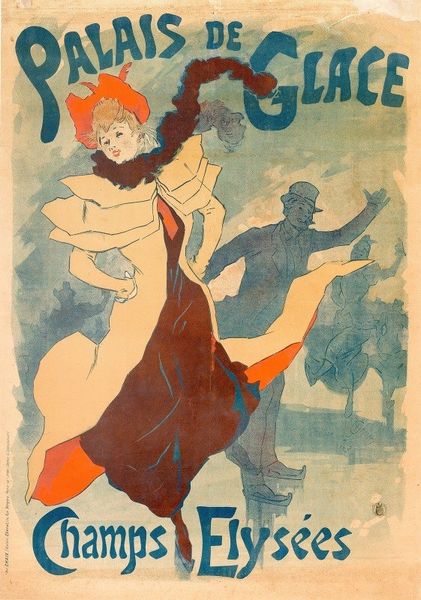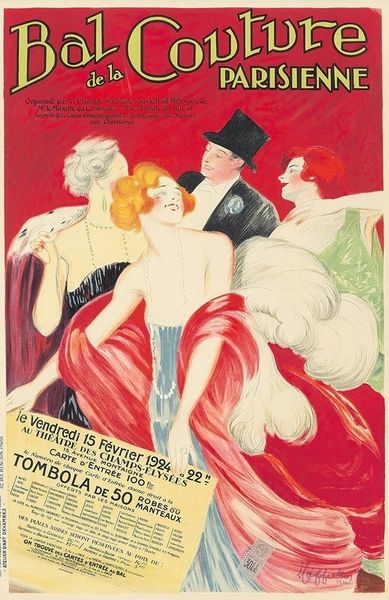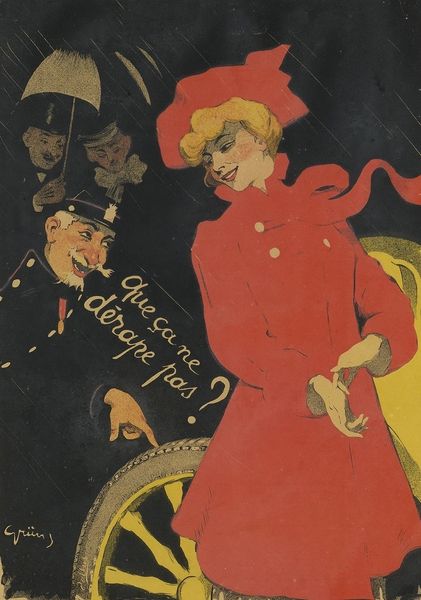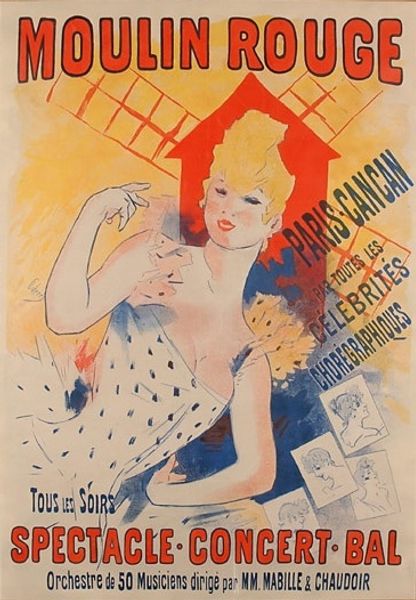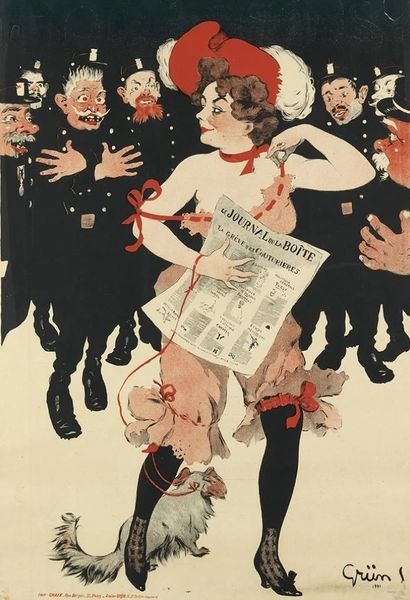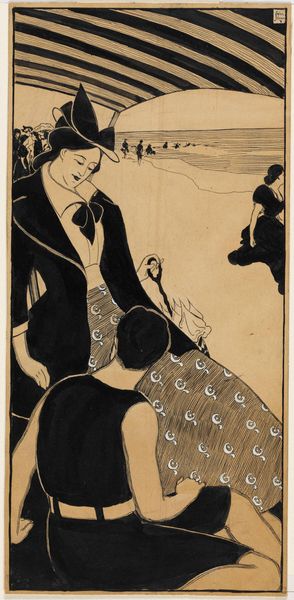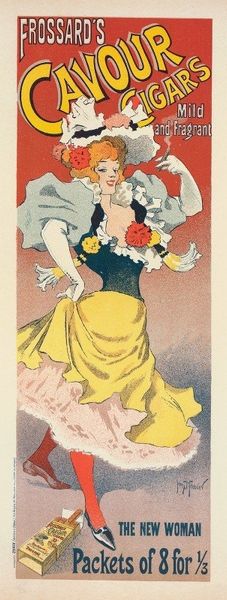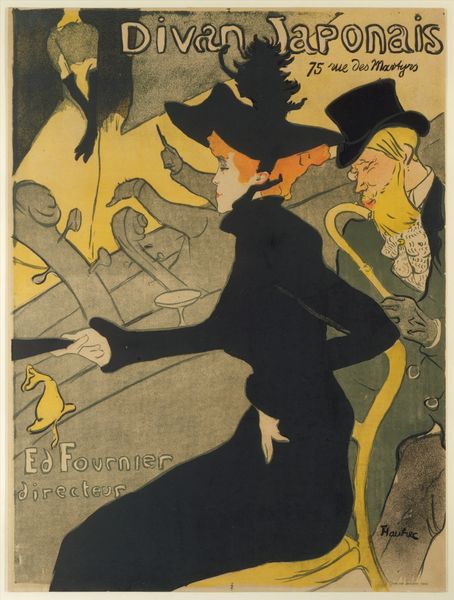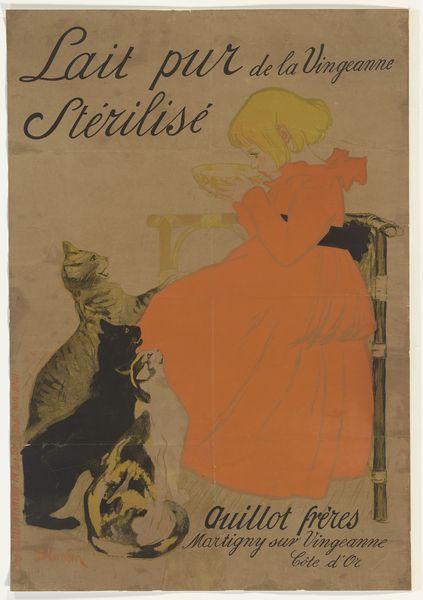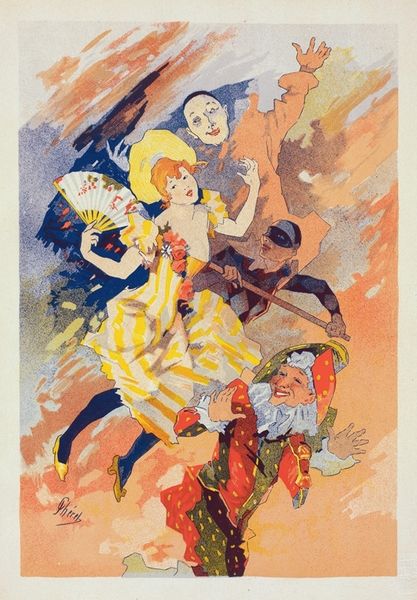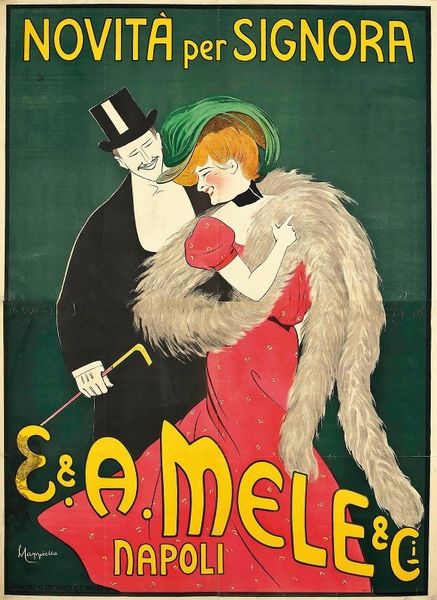
lithograph, color-lithograph, print, poster
#
portrait
#
art-nouveau
#
narrative-art
#
lithograph
#
color-lithograph
# print
#
figuration
#
mural art
#
poster
#
erotic-art
Dimensions: 46 3/8 x 32 1/2 in. (117.79 x 82.55 cm) (image)48 x 34 in. (121.92 x 86.36 cm) (sheet)76 1/4 x 43 3/4 x 1 3/8 in. (193.68 x 111.13 x 3.49 cm) (outer frame)
Copyright: Public Domain
Curator: At last, here we are in front of Jules-Alexandre Grun’s striking color lithograph, "Scala - At Last," created around 1900. It’s a vibrant example of the posters designed to draw crowds to Parisian entertainment. Editor: My first thought? A potent image. The sweeping lines, bold red backdrop, and suggestive figures undeniably draw the eye. There’s something quite theatrical and intimate happening all at once. Curator: Indeed. Grun captures that Belle Époque energy perfectly. It’s advertising a revue at the Scala theatre. Notice the title—"Enfin, seuls!"—implying “finally alone,” a clandestine meeting, which, of course, adds a layer of erotic allure. Editor: Absolutely, that hint of transgression is key. We’re presented with what seems to be a backstage embrace, her semi-nude back presented as a vision of modern female autonomy and independence. And consider the gaze the man has. It is less of a loving gaze than a smug "capture". Curator: Interesting! He does embody a specific, and arguably dominant, form of masculine desire prominent in public imagery of the era. And look at her ornate jewelry—clearly intended for display. These advertisements reflect a commodification of leisure and the performing body that speaks to the commercialization of pleasure prevalent during this period. Editor: Certainly, we’re seeing not just romance but also a transaction. The Art Nouveau style here—the sinuous lines, the flattened perspective—elevates a common scene of performance to something simultaneously beautiful and complicit with the exploitation that defines commercial society. Curator: But isn’t there a certain irony there as well? Advertising for art is an intrinsic value, making this lithograph part of a public debate, by depicting the relationship as exploitative while being itself, exploitative? The poster format allowed art to intersect with everyday life, making artistic expression accessible to broader audiences beyond museum walls. Editor: That tension makes it resonate still, doesn't it? The intersection of public art, personal identity, performance, and power – Grun captures a turning point, a moment pregnant with implications we're still unpacking today. Curator: I find this image to be very telling on how the narrative of gender relations has played out across cultural landscapes and the very dynamics of how performances are framed as commodities. Editor: For me, seeing such striking confidence captured in that female figure allows viewers to consider where freedom begins and performance ends, especially as displayed so proudly.
Comments
No comments
Be the first to comment and join the conversation on the ultimate creative platform.
